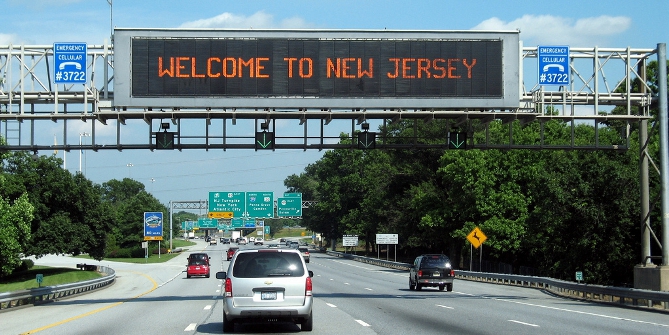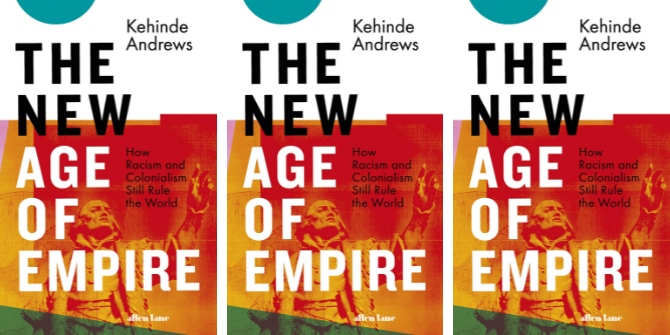
 When implementing policy, Congress can choose to allocate grants to state governments as grant aid, or for the funds to be administered by agencies at a federal level. In new research Stuart Kasdin and Federica Iorio look at how the dominant ideology of Congressional institutions affects the design of such programs. They find that when Congress and a federal administration share the same partisan orientation, the program is more likely to be administered by the central government than as grant aid to the states, and vice versa. They also write that when an agency has a history of grant making to the states, Congress is more likely to propose grants than central provision.
When implementing policy, Congress can choose to allocate grants to state governments as grant aid, or for the funds to be administered by agencies at a federal level. In new research Stuart Kasdin and Federica Iorio look at how the dominant ideology of Congressional institutions affects the design of such programs. They find that when Congress and a federal administration share the same partisan orientation, the program is more likely to be administered by the central government than as grant aid to the states, and vice versa. They also write that when an agency has a history of grant making to the states, Congress is more likely to propose grants than central provision.
The United States is a strongly federal system in which states have separate responsibilities from the federal government, though there is a great deal of overlap. One such area is in federal grants in aid to state and local governments, in which the lower levels of government take responsibility for most of the administration of federal programs and each state has some scope to interpret according to its own preferences how the program should be carried out, the degree to which varies by the program. Thus, grants in aid decentralize decision making authority, giving lower levels of government the opportunity for policy making as part of the program execution. Why should the federal government relinquish its control over policy decision making by using grants?
It isn’t as if grant in aid are a minor aspect of the federal budget or are not really important for the federal states and have not increased significantly over the years. In 1960, for example, such grants accounted for 7.6 percent of all federal outlays and 1.4 percent of GDP. By 2011, this grew to 16.8 percent of all federal outlays and 4.1 percent of GDP. In 2012, close to 25 percent of total State and local government spending came from grants in aid from the federal government.
Why are some apparently similar programs designed as grants to states while others are administered by the central government? For example, Medicare (health care for the aged) and the hospitals of the Veteran’s Administration are administered by the federal government, but the Medicaid (health care for the poor) and various social assistance programs e.g., the Social Services Block Grant, and the Children and Families Services Programs operate through grants to states.
One theory is that grants are preferred over direct central government provision when the particular type of projects calls for it. With grants, the federal government is able to encourage state and local governments to incorporate the “spillover” effects from their projects – the grants cover the additional costs for projects that have impacts that affect jurisdictions outside the locality’s borders.

Credit: Ash Carter (Flickr, CC-BY-2.0)
Another theory is based on the path dependency. By developing a federal-state pathway through practiced use, certain agencies are better positioned to develop new programs as grants. However, there is a lot of variation in program design even within the same agencies. For example, the Department of Housing and Urban Development’s (HUD) Public and Indian Housing Programs bureau uses grants to states for its programs (e.g., the Tenant Based, and Project-based Rental Assistance programs), while the Federal Housing Administration, also part of HUD, and the largest mortgage insurer in the world, operates through direct provision. If minimizing program delivery costs by using grants were the sole motivation for congressional committees, we would expect more homogeneity within agencies and bureaus.
Our theory is based on principal –agent theory; the agent implementing and executing a program will significantly influence the content of the program, such as determining a target population to receive benefits. However, Congress may not automatically trust the President or federal agencies to deliver program resources as they intended, particularly when different political parties control separate branches of government.
Therefore, when designing new programs, Congress can opt to avoid federal agencies that it considers partisan or oriented toward different program goals than the Congressional committee that is structuring the program. By designing a program as a grant in aid, Congress can partially circumvent federal agencies for program delivery responsibilities.
We argue that depending on whether the states or the federal bureaucracy and President have policy preferences closer to the Congress’ determines the structure of the program. We test this hypothesis and several competing explanations in an empirical analysis covering federal government program creations from 1976 – 2008.We examined the political and economic conditions present in the year before a program was created to understand what contributed to the choice of direct central government provision or a grant program structure.
Partisanship seems to play a role in the choice of program design so that when the President and Congress belong to different parties the likelihood of grant design increases. We also found that when Congress and a federal bureau are perceived to share the same partisan orientation, the likelihood of a grant to the states is reduced. On the other hand, when the Congress views a federal bureau in partisan terms, believed to be at odds with those of Congress, the likelihood of a grant to the states increases.
We also tested the degree to which shared ideological preferences by Congress, and the President and agencies affects the choice of program design using DW Nominate scores. During both Republican and Democratic Congress years, increased ideological differences or separation between Congress and the President is positively related to the likelihood of a grant design. In addition, during years in which the Republicans controlled Congress, the perceived ideology of the federal agencies also mattered– with less ideological compatibility, the greater the chance of a program being designed as a grant.
These findings supplement rather than supplant previous hypotheses about the factors that influence the choice of program design. Consistent with the expectations of cooperative federalism, we also find that when an agency has a history of grant making, Congress is more likely to propose grants rather than central provision. Previous state experience with grant programs and the opportunity to piggyback on existing state and local distribution networks makes the creation of another grant program more likely. Moreover, as the greater the share of existing spending on grants in aid programs in an agency’s budget, the greater the likelihood that new programs will be designed as grants.
Formally, programs are designed to accomplish programmatic ends. However, in reality, Congress also uses program design to reflect its partisan and ideological goals. Grants permit Congress to avoid having to rely on federal agencies that may have different partisan or ideological preferences than the Congress. Grants may enable welfare gains from decentralization, especially by offering lower program delivery costs, but they are also an important tool for Congress as a way to overcome agency problems.
This article is based on the paper, ‘The Political Economy of Program Design’, in American Politics Research.
Please read our comments policy before commenting
Note: This article gives the views of the author, and not the position of USApp– American Politics and Policy, nor of the London School of Economics.
Shortened URL for this post: http://bit.ly/262PxWC
______________________
 Stuart Kasdin
Stuart Kasdin
Stuart Kasdin was most recently Assistant Professor of Public Policy and Public Administration in George Washington University. Previously he worked in the White House Budget Office as a program examiner and policy analyst. His research focuses on public management, such as assessing what influences government agencies in how they allocate contracts or projects. He has also looked at budgeting and public performance, examining government agencies, as well as Congress.
 Federica Iorio – George Washington University
Federica Iorio – George Washington University
Federica Iorio is a PhD student at the Trachtenberg School of Public Policy and Public Administration. She has a master’s in economics from the George Washington University. Her research interests are focused on budgeting and finance and international development. She has previously worked for the World Bank.












